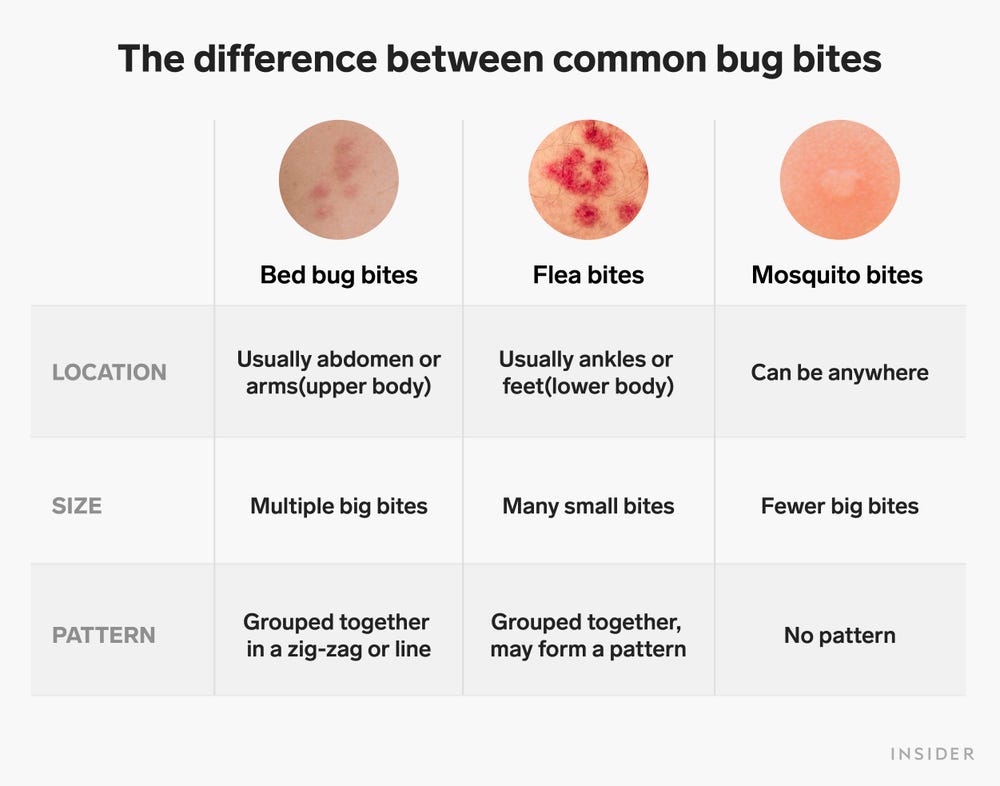Many people are surprised to learn that they have been bedbug bites. Bedbug bites usually look like raised, flat or slightly inflamed areas that can become red, blistered or even inflamed.
It is important to remember that a bedbug bite does not have to be visible. If a person is bitten but has no signs of being scratched or injured, he/she can not have a bedbug bite because these insects do not survive on the skin. They live below the surface. Bedbug bite reactions do not usually show up right away and can take days or weeks to start causing noticeable signs of irritation and discomfort.
Although a bedbug bite reaction can vary depending on the area that has been bitten, the most common way that a bite looks after the initial bite reaction is a red rash. Sometimes this rash may look scaly and sometimes it may look similar to that of an insect bite.
If a person has a bedbug bite and has a red rash then he/she should take steps to get rid of the insect in the best way possible. The first thing that should be done is to contact a bedbug exterminator to come out and inspect the house for possible infestations.
Another step that should be taken by the bedbug extermination company is to call a qualified health professional such as a physician or dermatologist for advice on how to treat the rash. In most cases, the rash will go away within a week or two. However, some people have experienced a reaction from bedbug bites that lasted for longer periods of time.
If a person has an allergic reaction from bedbug bite, then he/she should make an appointment to see a doctor. In addition to taking precautions to avoid future bites, a doctor will be able to prescribe an allergy treatment medication to help alleviate the itching and burning sensation. Some medications are also available for treating insect bites that are left untreated.

As mentioned above, if a person is infested with bedbugs, they will need to make an appointment with a doctor or therapist to discuss treatment. if there is a chance that the bug bite was caused by an insect bite. Bedbug bites can also be caused by human contact, such as when bedbugs scratch themselves on the bed.
If you are concerned about bed bugs, you should consult your doctor for information on bed bug bites and preventive measures. Also, check your local library or bookstore for information on how to recognize and treat a bug bite.
There are many different ways to treat a bite, but you should not assume that they are all effective unless your doctor advises you otherwise
First you need to determine if you have an allergic reaction to an insect bite.
The reason this is important is because it can make it easier for a doctor to diagnose an insect bite and learn how to treat it properly. To do this, your doctor will look at your medical history and then perform tests such as blood tests. to determine if you are allergic to the insect that bit you.
After you determine what type of allergy you have, your doctor will prescribe different treatments for you. treatment depending on what type of allergy you have. Most of the treatments will be topical, and some over-the-counter creams and pills can be purchased that can be used to treat the itching and burning sensation associated with bedbug bites.
If you still have symptoms after receiving treatment, then you should visit your doctor immediately so that your doctor can prescribe another course of treatment. Some treatments require the physician to perform a skin patch test in order to see if the treatment will actually work. If you still have a rash or other irritation, your doctor may need to do more tests to rule out a bacterial infection. If you have a chronic reaction to a specific type of bedbug bite, then your physician may have to treat the entire home in order to remove all bedbugs from the home or even the entire neighborhood.
Although the itching and burning that you feel from bedbug bites are normal, it is still important to consult a physician in order to make sure that the bedbugs are actually gone. Once the treatment is performed, you will then need to continue to treat any areas that are affected so that the infestation is completely eradicated.